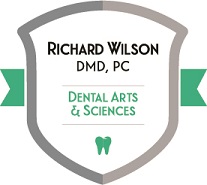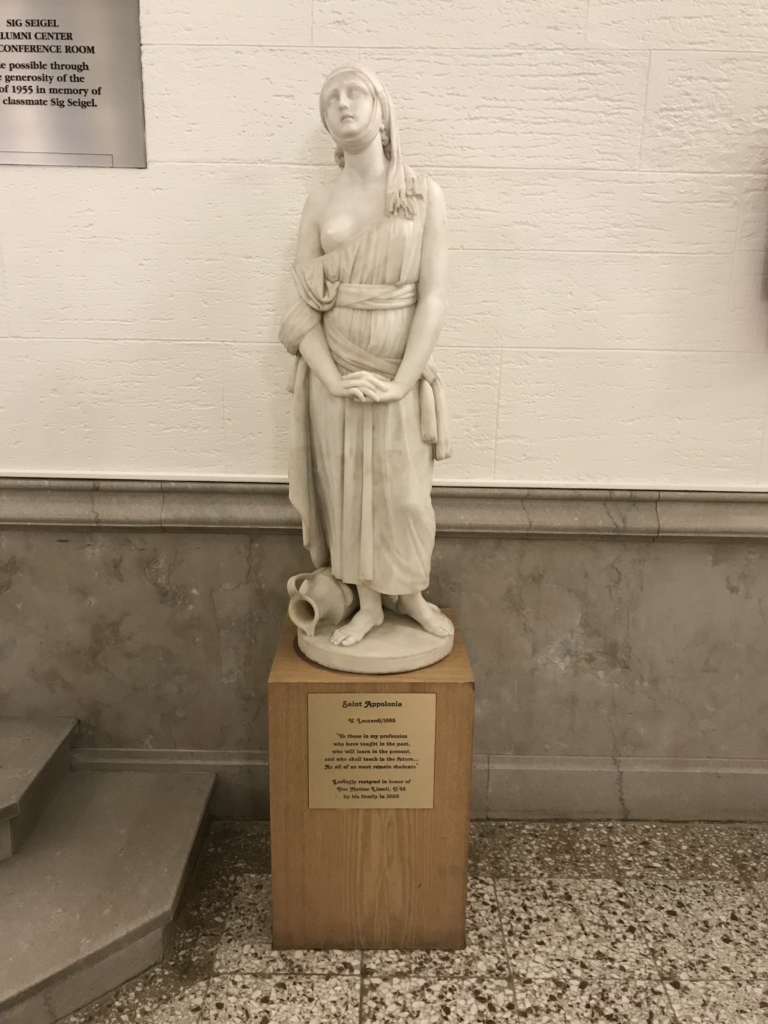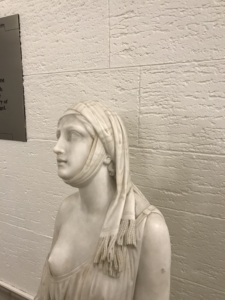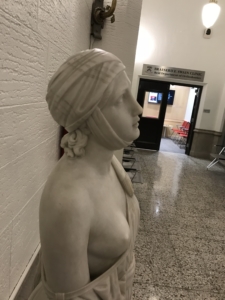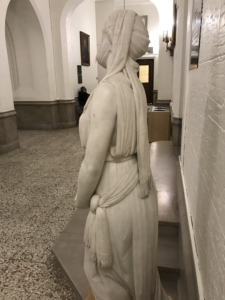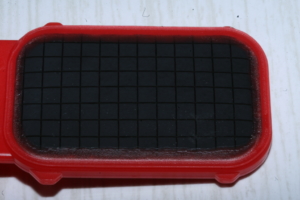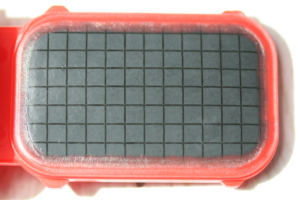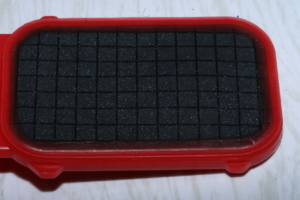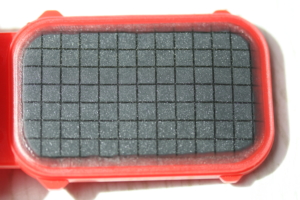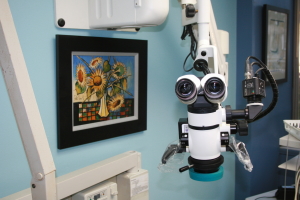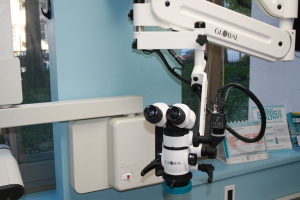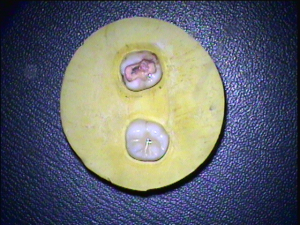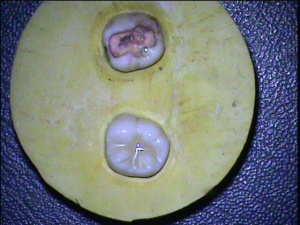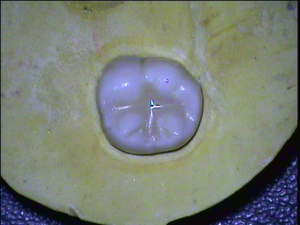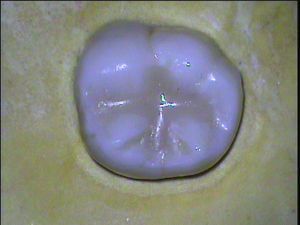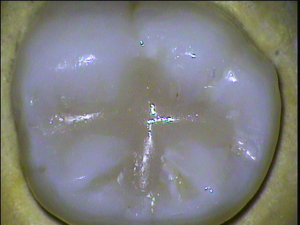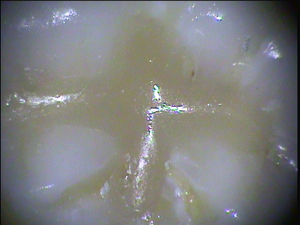SARS-CoV-2 Vaccines, Explained
The mRNA vaccines against Covid-19, also called SARS-CoV-2, have been surrounded by controversies, as we are all aware.
Let us break down how these vaccines actually work.
There are several broad categories of vaccine types that have been used since British physician Edward Jenner first vaccinated 8-year-old James Phipps in 1796.
Similar-Species Vaccines are not common today, but were very important historically. The world-changing smallpox vaccine used cowpox, a poxvirus that was similar enough to smallpox to protect us against it, but not cause disease in humans. The Covid-19 vaccines currently being developed are not of this type.
The next category is Live-Attenuated (weakened) Vaccines. Attenuated vaccines can be made in several different ways, but they all involve passing a virus through a non-human host in the lab. Sometimes, for up to 200 cycles. The goal is to produce a version of the virus that can still be recognized by the human immune system, but cannot replicate (make copies of itself) well inside our bodies. Examples of attenuated vaccines include MMR (Measles, Mumps, Rubella), Chickenpox, Influenza, and Rotavirus.
There is one concern with attenuated viruses: that they may, through random mutations, regain the ability to replicate within the human body and cause illness again. The most significant example of this in the U.S. was the oral polio vaccine, which was an attenuated virus. In extremely rare cases, it mutated fast enough to cause polio again, so we switched the polio vaccine to the next category of vaccine types in order to 100% avoid this complication.
The next category is Inactivated Vaccines, which are produced by “killing” the pathogen with chemicals, heat and/or radiation.
(Sometimes, to be as certain as possible of total kill, researchers even expose the virus in question to repeated recordings of the rants of modern American Members of Congress and other politicians …)
Note, I placed the word “killing” in quotations marks above. This is because a virus, in a philosophical sense, isn’t really alive at all, at least in some ways of looking at it. Viruses are inert outside of their host, and don’t really “do” anything at all until they make their way in and start causing trouble. It’s a very weird concept to grapple with.
Any event. I imagine the technical trick with making inactivated vaccines is to wreck the virus DNA or RNA, so that it can’t do anything to harm us, and yet leave the outer protein coat relatively intact. In this way, our immune system can still recognize the protein shapes it has to in order to fight the virus. It’s a clever balance!
The fourth category of vaccines against viruses is the newest one, in use since the 1980s, and it’s really clever: Subunit Vaccines.
What if we could take just parts of the protein shell, that our immune system can recognize, and not have any viral DNA or RNA at all? Without its DNA or RNA, a virus isn’t a virus. Its genetic code is what enables it to harm us by telling the cells it enters to do something that the virus “wants” instead of going about their normal business. Robbed of its genetic material, such a mere shell of a virus makes the iconic country singer who’s lost his gal, tore his best jeans and crashed his pickup truck look like the luckiest guy in the world.
To make a subunit vaccine, just one viral gene coding for one vaccine protein is inserted into producer cells in culture; often, yeast. The yeast (bless the little beasties, who also make us bread and beer) pump out this one protein, a vaccine is made with it, and even though our immune system doesn’t get to “see” the whole virus, often times, one piece of it is enough to stimulate an effective immune reaction. Those red spikes on Covid-19 look like mighty fine targets, don’t they?
The Hepatitis B and HPV (human papillomavirus) vaccines are examples of subunit vaccines.
What does this all mean for us as we go forward? The Covid-19 vaccines that reach commercial development are not going to be similar-species vaccines, so we can forgo that category.
For me, if a Covid-19 vaccine is a subunit vaccine or an inactivated vaccine, I have no worries at all about receiving it. Sign me up to go first, give me twenty boosters, I’m not worried about a thing.
If the vaccine is an attenuated one, I’ll still get it, but even as a health care worker, I’m inclined to hold back for just a little while, to ensure that no Covid-19 infections result from it. Especially considering that this whole enterprise is a rush job. Probably just a month or so would be enough to make the call.
In my view, though, the rigid anti-vaxxer stance is foolish, misinformed and just a staggering example of human confirmation bias, in which no amount of real-world facts can change emotionally charged beliefs.
We get to have our own opinions, yes. But we don’t get to have our own facts.
I sincerely hope that this post helps you all understand anti-viral vaccines better than you did before, and gives you the confidence to receive them, should Covid-19 vaccines become available.
Oh, and this year of all years, please get your flu vaccines.
And floss.
Vincenzo Luccardi Statue of Saint Appolonia
Last night, Dr. Kuang and I, Dr. Wilson, attended a highly innovative lecture on periodontal treatment at Penn School of Dental Medicine. While there, we encountered this superb statue of Saint Appolonia. The sculptor was Vincenzo Luccardi. His dates were 1811-1876.
Saint Appolonia was an early Christian from Alexandria, Egypt. She was martyred for her faith in A.D. 249. Her assailants attempted to force her to recant her faith and utter a blasphemy. When she refused, by repeated blows they broke all her teeth. The mob then built a fire and threatened to burn her to death unless she recanted. According to the historian Dionysius, Saint Appolonia reacted by leaping into the fire herself, rather than being tortured further and allowing her will to be broken.
To this day, in the Roman Catholic and Eastern Orthdox churches, Saint Appolonia is popularly regarded as the patroness of dentistry and those suffering from toothache or other dental problems.
Interestingly, Saint Appolonia has most often been depicted as a woman in the prime of her youth, yet historrical sources indicate that she was in her sixties or seventies at the time of her passing.
When I saw this splendid work last night, I stood there in awe at its incredible technical execution. Senore Luccardi is, perhaps, under-rated.
This work by Luccardi is meaningful to me because of the way it symbolizes my profession’s highest purpose, which is to relieve and even to prevent human suffering. Further, Saint Appolonia reminds me–on an almost personal level, as if she is speaking directly to me across the span of ages–of mankind’s frequent cruelty towards itself, and of how supremely important it is to strive all throughout our too-brief lives to prevent such cruelty, wherever and whenever we can.
Saint Appolonia may have died one thousand seven hundred and sixty-nine years ago, but she continues to have great meaning and relevance to this twenty-first century dentist.
Dental Waterline Safety
In 2016, we started using ozone to clean and disinfect our dental unit waterlines. The ozone is dissolved in distilled water, which we then place in the self-contained bottles that supply our waterlines. We’ve always used clean, distilled water, not street water, but the main issue is that bacteria build up in the extensive small-diameter tubing that carries water through the unit. Such bacteria can, in the wrong circumstances, cause disease.
Well, here are the results of using ozone. We tested our water with plate samplers from the Millipore Corporation. These first two photographs are of a plate from a unit that has been maintained with ozonated water for some 12 weeks now:
Across the gray surface, if we look closely, we see the occasional small raised dot. This represents a “colony forming unit,” meaning a place were at least one bacterium was able to land and start growing on the culture medium.
Here is a plate from a unit that was only treated with other methods:
EACH little raised dot represents a colony forming unit.
Rest assured that after testing we immediately blasted that unit with ozonated water, and tested it after flushing the lines.
And we now have the cleanest dental unit waterlines in the region.
_________________________________________________________________________
Microscope Assisted Dentistry
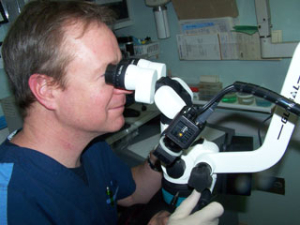 We are one of a very few general dental practices that employs Surgical Operating Microscopes.
We are one of a very few general dental practices that employs Surgical Operating Microscopes.
The light and magnification is so spectacular, that treating patients in a Microscope is an entirely different level of dentistry than anything that came before.
It’s Dentistry V2.0, is what it is.
Cute looking little fellow, isn’t he?
Just to give you some tiny inkling of how much more precisely we can treat you with a Microscope, have a look at one of my student friend’s work, at each of our six successive increases in magnification. This is my friend Jaimin’s lab work on an extracted tooth–performed under my guidance before she even started attending dental school. Such potential!
Microscope dentistry is defect-free dentistry.
We look forward to solving your oral health issues with the precision and excellence that are only attainable with this, the most powerful of all our modern dental technological innovations.
_________________________________________________________________________
